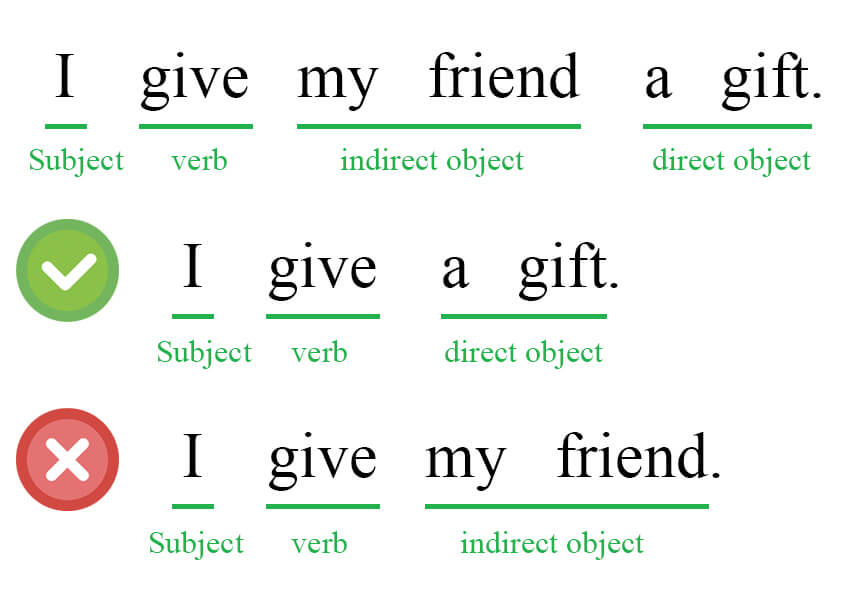Direct Object VS Indirect Object
- A direct object is the receiver of the action. It's usually a noun or a pronoun.
- A direct object answers the questions "what?" or "whom?"
- An indirect object is the secondary receiver of the action. It comes before the direct object.
- An indirect object answers the questions "to whom?" or "for whom?"
- You cannot just have an indirect object without a direct object.
What are Direct Objects?
Direct objects are the receiver of the action in a sentence. They answer the question "what?" or "whom?". They come after a verb.
Examples:
-
Amy reads books.
"reads" = verb, "books" = direct object.
-
George loves her.
"loves" = verb, "her" = direct object.
What are Indirect Objects?
Indirect objects are like the secondary receivers in a sentence. They answer the question "To whom?" or "For whom?". Indirect objects always come before the direct object.
Examples:
-
I give my friend a gift.
"give" = verb, "my friend" = indirect object, "a gift" = direct object.
-
My father sends my mother a birthday card every year.
"sends" = verb, "my mother" = indirect object, "a birthday card" = direct object.
Note: You can have only a direct object. However, you CANNOT have only an indirect object.
Examples:
-
I give a gift.
There is no indirect object. (OK)
-
I give my friend.
There is no direct object. (Not OK)
和AI英语老师一起练习这个话题
AI英语老师会教您语法,并以对话的形式和您一起练习。 另外,还有 100 多个有关该主题的练习题来巩固您的理解。
在您的手机或平板电脑上免费试用 ALULA










你对这节课有任何问题吗?请在下面的评论区提问。